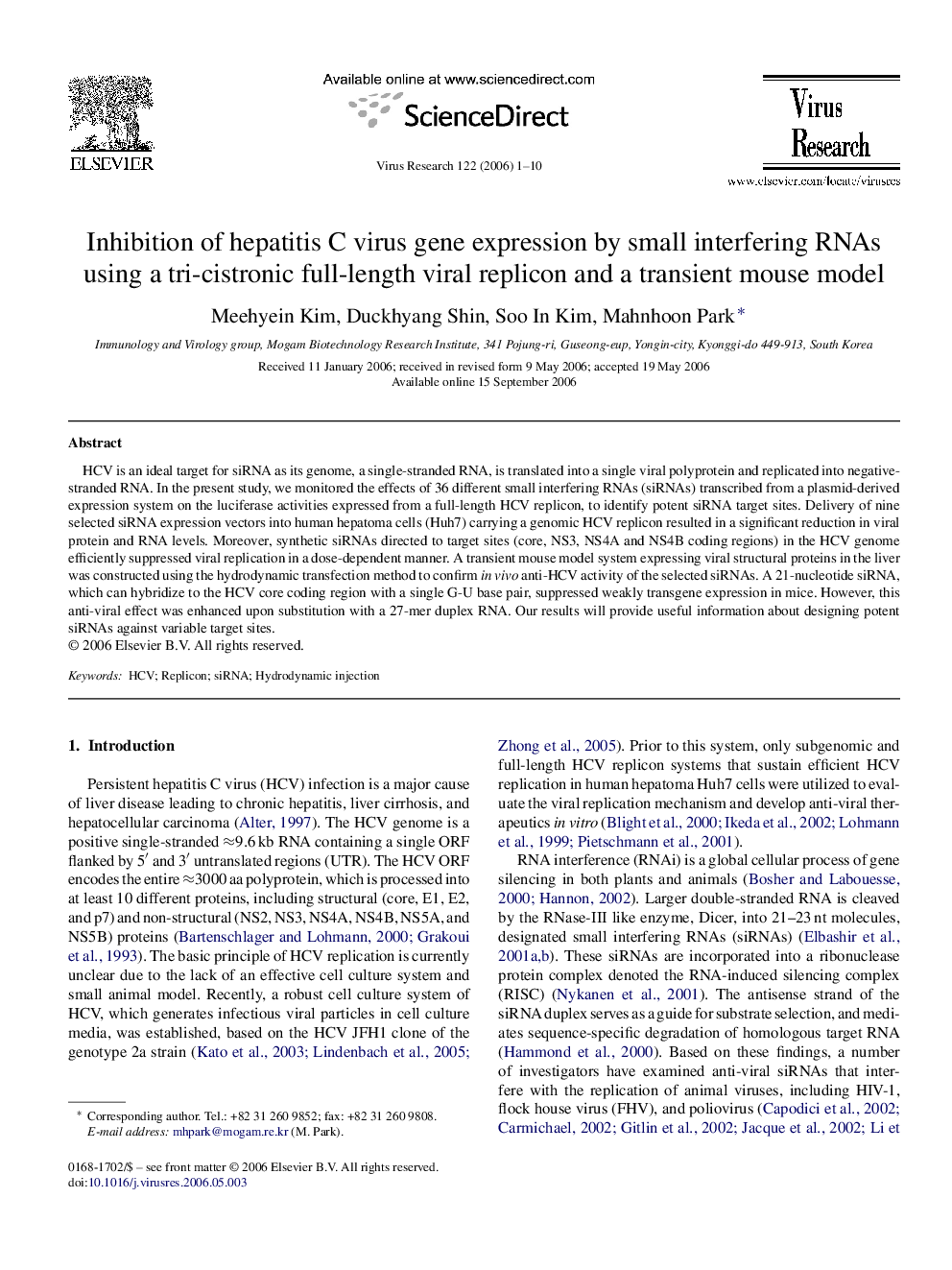| Article ID | Journal | Published Year | Pages | File Type |
|---|---|---|---|---|
| 3431158 | Virus Research | 2006 | 10 Pages |
Abstract
HCV is an ideal target for siRNA as its genome, a single-stranded RNA, is translated into a single viral polyprotein and replicated into negative-stranded RNA. In the present study, we monitored the effects of 36 different small interfering RNAs (siRNAs) transcribed from a plasmid-derived expression system on the luciferase activities expressed from a full-length HCV replicon, to identify potent siRNA target sites. Delivery of nine selected siRNA expression vectors into human hepatoma cells (Huh7) carrying a genomic HCV replicon resulted in a significant reduction in viral protein and RNA levels. Moreover, synthetic siRNAs directed to target sites (core, NS3, NS4A and NS4B coding regions) in the HCV genome efficiently suppressed viral replication in a dose-dependent manner. A transient mouse model system expressing viral structural proteins in the liver was constructed using the hydrodynamic transfection method to confirm in vivo anti-HCV activity of the selected siRNAs. A 21-nucleotide siRNA, which can hybridize to the HCV core coding region with a single G-U base pair, suppressed weakly transgene expression in mice. However, this anti-viral effect was enhanced upon substitution with a 27-mer duplex RNA. Our results will provide useful information about designing potent siRNAs against variable target sites.
Related Topics
Life Sciences
Immunology and Microbiology
Virology
Authors
Meehyein Kim, Duckhyang Shin, Soo In Kim, Mahnhoon Park,
